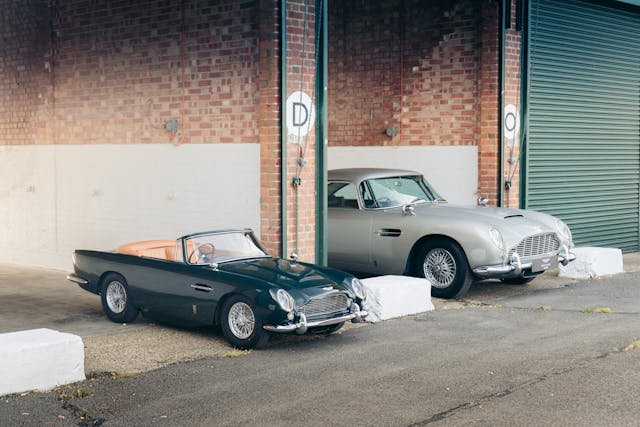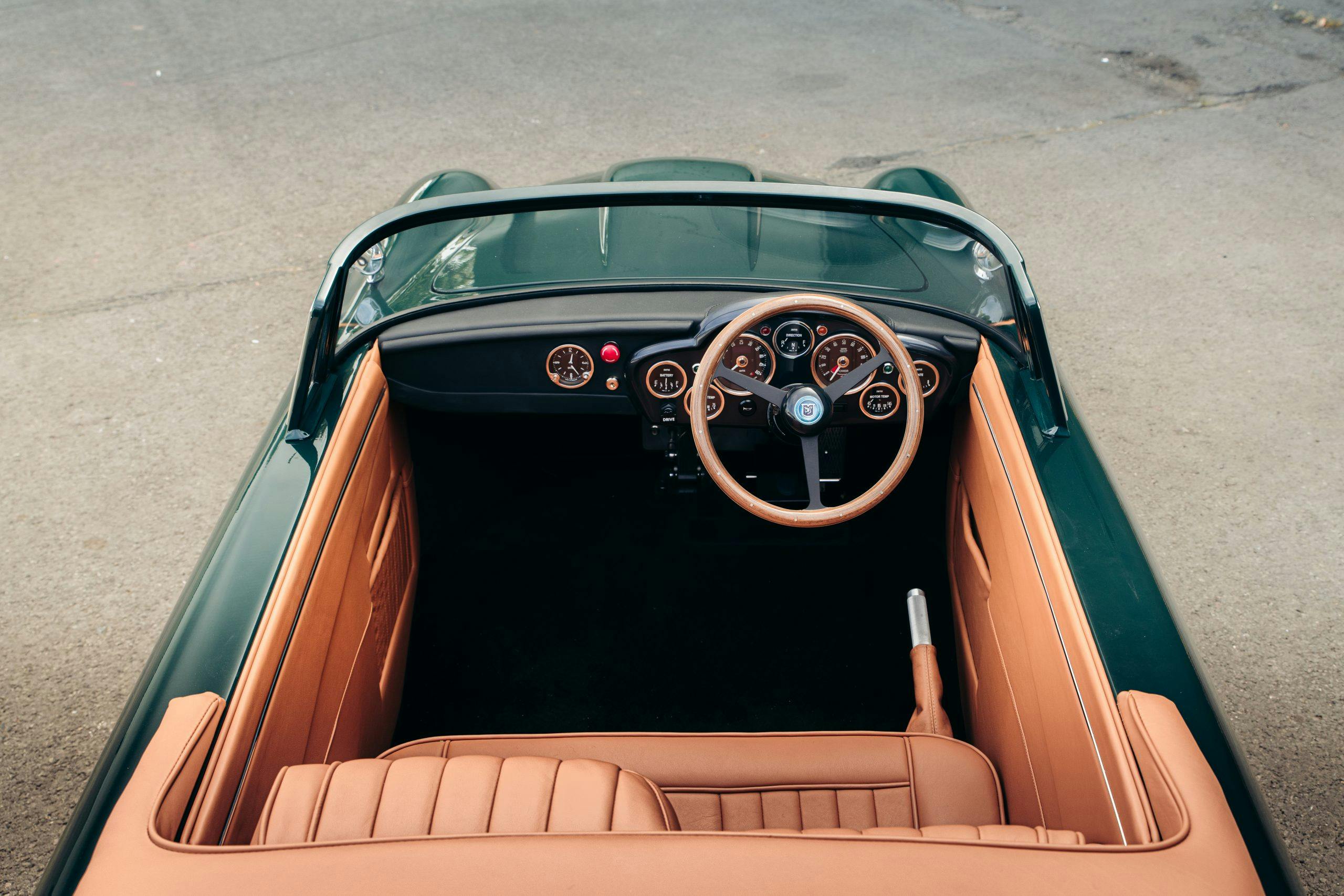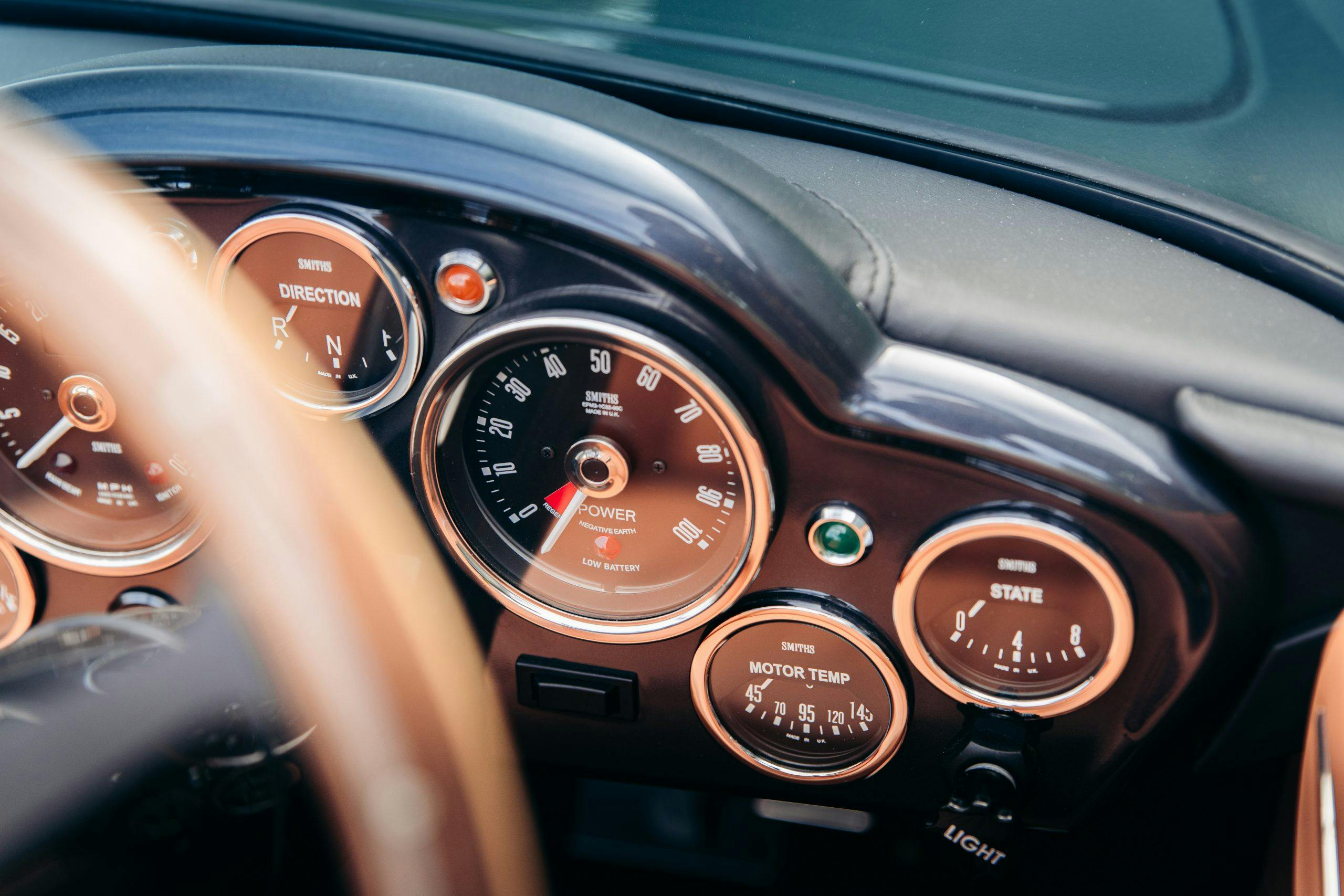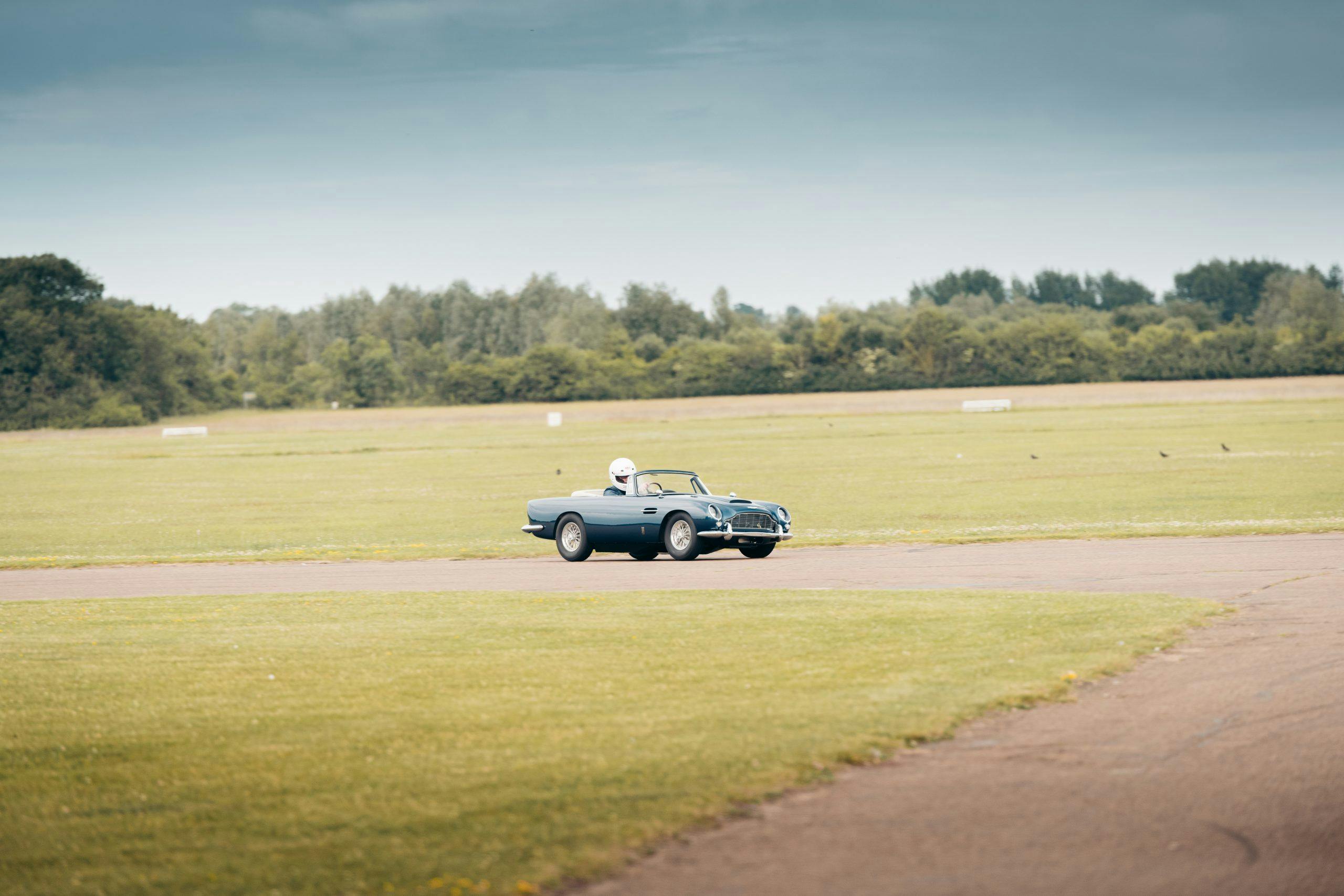Media | Articles
The Aston Martin DB5 Junior is a little Brit with big fun
The best car bosses are true car people. Bosses like Jim Farley who takes to the track in a GT40, AC Cobra, or, appropriately, a Boss Mustang. Or like Akio “Morizo” Toyoda who’s raced at the Nüburgring 24 Hours and takes a special interest in driver-focused products like the Lexus LFA.
Ben Hedley of the Little Car Company belongs in that same category. When he’s not steering the British startup that creates stunning scaled-down version of Bugattis, Ferraris, and Aston Martins, Hedley races a (suitably small) Caterham Seven.
Today he’s demonstrating his skills in an Aston Martin DB5 Junior on a short test track at the company’s base at Bicester Heritage, Oxfordshire. Hedley hurtles into a right-hander at the limit of adhesion, tires squealing as he carves an arc that extends into the following corner. The car may be just two-thirds of the size of the original, but Hedley’s commitment is 100 percent.
Powering through the exit, dialing in some opposite lock it’s looking like a textbook turn, but just a touch of over-correction and the DB5 has swapped ends in flash. Hedley grins as he heads back to the watching staff.
“We designed the car to be a bit more playful than the Testa Rossa J,” says Hedley. “In fact we had a V-8 Vantage from Aston Martin as our benchmark, rather than a DB5.”
Marketplace
Buy and sell classics with confidence
Aston Martin racer and test driver Darren Turner helped set up the Bilstein dampers, Faulkner springs and Brembo brakes (from a Ducati Diavel). The ten-inch wire wheels are by Torino and the tires are the least sticky rubber that Nankang makes for classic Minis. “To be honest we’re looking for tires with even less grip,” he adds.
If you’ve read our drives of the Bugatti Baby II and the Ferrari Testa Rossa J you’ll be aware that the Little Car Company really is a proper car company, only smaller, with an attention to detail that matches the brands it miniaturizes. The DB5 Junior is sold as an Aston Martin, just as the Testa Rossa J is a Ferrari and the Baby is a Bugatti.
The Aston is, however, at an even further reduced scale. While the Ferrari and Bugatti are 75 percent replicas the DB5 is at 66 percent. “We wanted to make it the same size as the Bugatti so all of our cars have similar proportions,” says Hedley. “The DB5 is just a bigger car in real life.”

The original car is also a four-seater but the Junior was only ever going to be designed for two. “It had to be big enough to fit an adult and a child for it to have that family bonding experience,” he adds.
Aston Martin was involved throughout the car’s development, providing unlimited access to original design material so that the shrunken body would be perfectly proportioned, and even designing interior, with its Bridge of Weir leather trim and Smiths instruments. The smallest quick-release wood-rimmed steering wheel in the world is a beautiful finishing touch.
Like any new Aston Martin the options list is long, and rather pricey. Start with a base model DB5 Junior at £35,000 ($42,100) and you get a composite-bodied car with 5kW of power and a 1.8 kWh battery for a 30km (18.6 miles) range or pick the Vantage for £45,000 ($54,100) and upgrade to carbon-fiber bodywork, a 10-kW motor and double the battery capacity for double the range. A range of metallic paints can be optioned at £2000 ($2400) and you can plump for wool carpets and Connolly leather for a further £3250 ($3910).
Start adding these up and you’re looking at vehicle for your 14-year-old son or daughter that’s considerably more expensive than a V8 Vantage of a similar age.
Time to see what kind of a driving experience that buys, then. What’s most immediately noticeable is that, once I’ve stepped over the side of the DB5 Junior and into the cockpit I do feel like I’m actually “in” a car rather than “on” one as I did both in the Bugatti and the Ferrari. That feeling’s reinforced by the wrap-around windscreen, which is just at the wrong height for me (or rather I am just the wrong height for it). My view ahead is precisely bisected by the top of the frame so I either need to sit up to see over it or hunch down to look through the screen. Your kids will likely just grow through this stage, but I’m stuck with it.
Like a go-kart the accelerator and brake are either side of the steering column, so both feet will be busy once the drive mode has been selected and the fly-off handbrake released. The regular Junior has a restricted Novice mode and an Expert setting to release full power, while the Vantage adds a touch of drama with a special aircraft-style switch hidden under a side panel to unleash Vantage mode. Concerned parents can also use a remote key fob to restrict how far their offspring can go to prevent junior from taking off to the mall.
Vantage mode selected and I’m off. The acceleration is on a par with an indoor electric kart, but the steering is much lighter—more so than both the Bugatti Baby and the Testa Rossa J, which does somehow make the Aston feel a bit more refined. It rides the bumps better than its stablemates as well. Not wishing to emulate Hedley’s spin, I take a couple of laps to build up, touching the brakes before turning in and feeding the power back in through the bends. Nothing for the kids to fear so far.
Now to try a more boss-like approach. Flat out into the corner, a more aggressive steering input and a lift off the throttle encourages the back to step out. Back on the power and a quick correction and I’m through for another go. Aiming for a bump at the apex helps further unsettle the little Aston so that the slide lasts longer. This is big fun for such a small car.
Even more entertainment is promised from the £90,000 ($108,000) No Time To Die Edition that will follow soon. With a smoke screen system, gatling guns, and digital number plates the 007-themed car will also be considerably more powerful. Definitely a sequel to look forward to.














